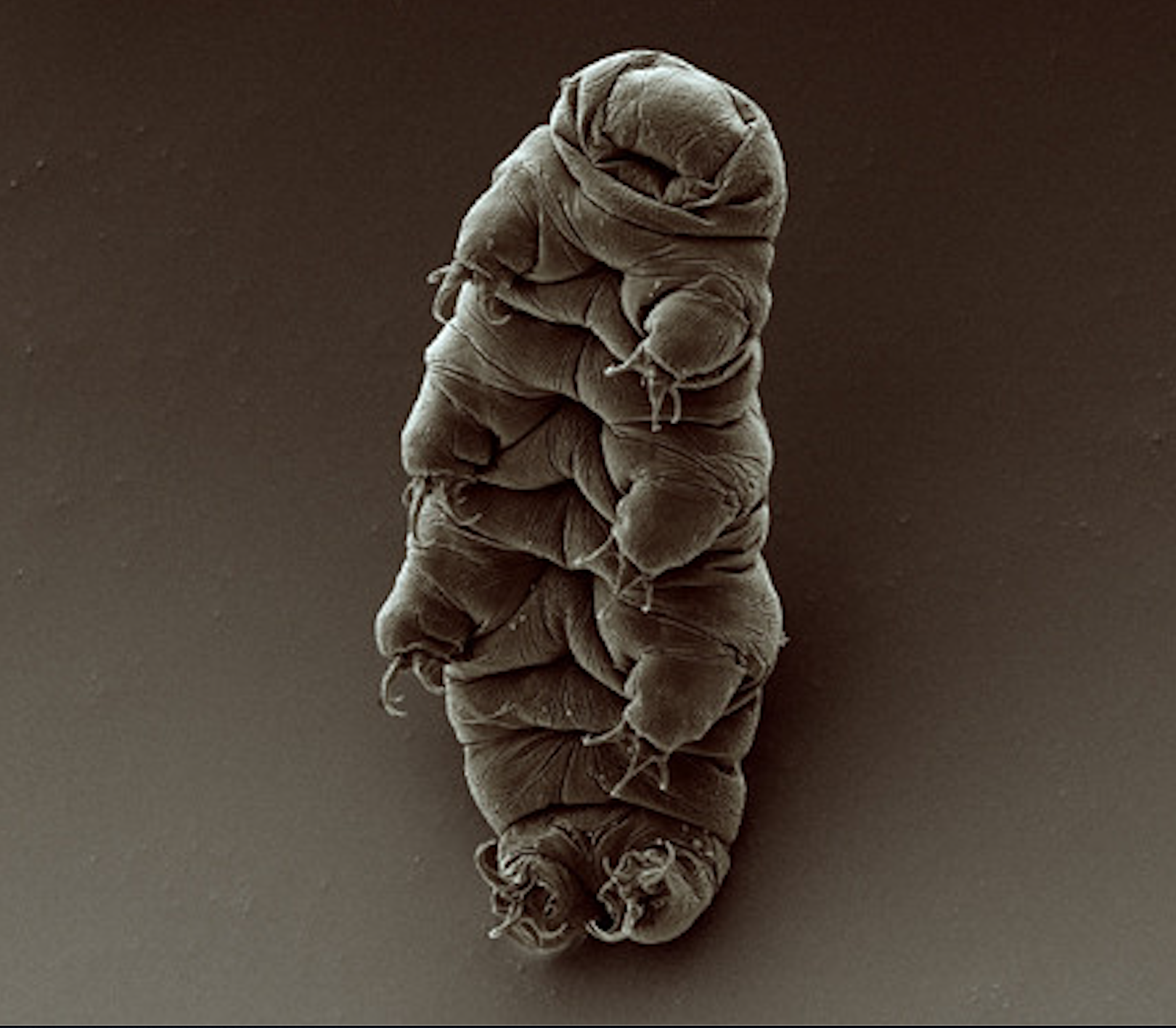Even Famously Tough Tardigrades May Struggle to Adapt to Climate Change

Credit to Author: Becky Ferreira| Date: Tue, 14 Jan 2020 19:26:30 +0000
Tardigrades are microscopic organisms with a reputation for being practically indestructible. The tiny animals, colloquially known as water bears or moss piglets, can survive extreme temperatures and pressures, years without food, and direct exposure to the vacuum of space. It’s even possible that tardigrades lived on the Moon for a while, after an Israeli spacecraft spilled thousands of them on the lunar surface when it crash-landed last year.
But even these death-defying creatures might be pushed to their limits by human-driven climate change, according to a recent paper in Scientific Reports. A team led by Ricardo Cardoso Neves, a cell biologist at the University of Copenhagen, found that the tardigrade species Ramazzottius varieornatus was vulnerable to temperatures that will become more common in the coming decades.
“Tardigrades are renowned for their ability to tolerate extreme conditions, but their endurance towards high temperatures clearly has an upper limit,” Neves and his colleagues wrote in the study.
“Global warming is already having harmful effects on habitats worldwide and it is therefore important to gain an understanding of how rising temperatures may affect extant animals,” the team noted.
To figure out how much heat tardigrades could potentially endure—a value known as “thermotolerance”—the researchers collected dozens of R. varieornatus tardigrades from a roof gutter in Nivå, Denmark.
One group of tardigrades was kept in an active state in which they were normally hydrated and able to move around. Another group was prompted to enter a desiccated “tun” state, which is one of the secrets of tardigrade evolutionary success.
As tuns, the animals are dormant dehydrated husks, adapted to outlast whatever pressures are temporarily placed on them. If more favorable conditions return, the tuns wake up, rehydrate, and become active again.
Neves and his colleagues measured the maximum temperatures that the tardigrades could withstand in active and tun states, on both short and long timescales. They also examined whether an acclimation period before exposure had any effect on the animals. In each case, the goal was to pinpoint the median lethal temperature, at which at least 50 percent of the tardigrades died.
The results showed that active tardigrades that had not been acclimated were “surprisingly” vulnerable, the team said, with half dying after 24 hours of exposure to just 37.1°C. The active tardigrades that had been acclimated had a slightly better result, hitting the median lethal temperature 37.6°C.
“Interestingly, this temperature is not far from the currently measured maximum temperature in Denmark,” which is 36.4°C, the researchers said. This suggests that tardigrade mortality may increase as intense heat waves become more common, which could have ripple effects for the ecosystems in which they live.
Meanwhile, the desiccated specimens were able to endure up to 82.7°C for one hour before half died, while the median lethal temperature dropped to 63.1°C for tuns over a 24-hour period. Since those temperatures exceed the hottest known temperatures in the current record, tuns have a much better shot at survival than in their active hydrated state, as expected.
The research demonstrates that even tardigrades—the poster species for resilience—will be affected by climate change, though they still have a far better shot of long-term survival than many other animals.
“Acclimatization in natural habitats may provide active state tardigrades the ability to tolerate rising temperatures,” Neves and his colleagues concluded. “Nevertheless, tardigrades—and especially active state specimens—are clearly sensitive to high temperatures, which seem to be an Achilles heel for their otherwise extraordinary tolerance towards extreme environmental conditions.”
This article originally appeared on VICE US.